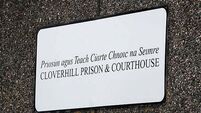How walking can transform your life

Erling Kagge has trekked to both poles, including solo to the South, and through New York’s sewers, from the Bronx to the Atlantic. Who better to write a book on the virtues of walking, says
“One day my grandmother was no longer able to walk. That was the day she died.”
These are the stark opening words of Erling Kagge’s latest book, simply entitled Walking, which so immerses one in the philosophy of walking that movement almost becomes our sixth sense, after touch, taste, smell, sight, and hearing.
After reading it, I felt as if I had been handed an amazing, yet obvious truth: forget the stress and all the trying-to-feel-good selfies. Just go outside, inhale, walk, and you will get to grips with your life. It’s that simple.
Kagge, an explorer, philosopher, art collector, publisher and erstwhile lawyer, made the cover of Time magazine in March 1993, after he conquered the South Pole in 50 days, solo (without even radio contact).
I expect him to exude an icy air, with grappling hooks rattling and frostbite-etched lines around his piercing eyes.
If anyone is qualified to write a treatise on the obvious benefits to our physical and mental well-being of simply swinging our arms and striding forward every day, then it is this man.
Much to my surprise, he is standing silently behind me before I even know it.
The 56-year-old’s piercing eyes are only intensified by a vibrant orange puffa jacket; there are no huskies prowling around the plush chairs and nary a rope or grappling hook in sight.
Standing face to face with the striking Norwegian, it’s still hard to believe that so much seemingly wreckless adventure could be distilled into one human body.
The eyes, almost fearsome in their intensity, hint at incredible experiences that his calm, hands-pocketed stance almost denies.
With the philosophy of the book still ringing in my ears, I am loath to keep him trapped indoors and suggest we slip off to St. Stephen’s Green and walk while we talk, in the lashing rain…
“Is this where the Oscar Wilde statue is?” he asks, looking around. “It’s by a good friend of mine, so I’d love to see it,” he adds, and I instantly feel terribly disappointed that we haven’t got the time to go to Merrion Square Park.
It’s a second disappointment for him on this trip to Dublin: he was hoping to spend time with another longtime friend, who is just not well enough to meet up. I express my sympathy, but he waves it away, saying the friend is very positive and has his family around him, so he considers himself very lucky.
“The last time I was over, we went to The Summit pub, in Howth, and got absolutely crazy drunk,” he laughs. “It was the best thing. It didn’t help change anything, but we had a brilliant time.”
We eventually shelter from the downpour under the thousand-yard stare of Constance Markievicz, in the park, as workers scurry past the two of us, unaware of the irony of a world-renowned explorer hiding from the rain, given that he has tackled treacherous conditions en route to both the North and South Poles.

“Actually, the South Pole is a base and not a peak or single point,” he explains in his lilting Norwegian voice, as I wait to hear first-hand what compelled him to plan the lunacy of a solo expedition to the South Pole.
After successfully reaching the North Pole, with Borge Ousland, in 1990, but otherwise unassisted, a solo mission seemed like the next logical step and once he had decided to do it, he just got down to the business of planning it. Then, he just went and did it.
I remember, I strolled into the base one day and, after all the silence of the journey, I was suddenly confronted with curious people, who saw this lone figure arriving and wanted to know what I was doing there by myself.
“I think they assumed I’d gotten lost. When I told them why I had turned up unannounced, they started firing questions at me. I wasn’t too happy about having to start talking all over again,” he shrugs with a wry, almost boyish smile.
It’s quite difficult, seeing his understated reactions to his own headline-grabbing achievements, not to feel like an over-excited Chihuahua yapping at a giant statue of Lassie. Kagge is the first person to have completed the Three Poles Challenge on foot — the North Pole, the South Pole, and the summit of Mount Everest. Apart from this, he has written six books: on exploration, philosophy, and art collecting. He also runs Kagge Forlag, a publishing company based in Oslo, where he lives.
His last book, Silence In The Age of Noise, has been translated into 33 languages. This is probably because he makes a lot of sense.
When his personal life was “shit”, he walked through New York’s sewer system, all the way from the Bronx to the Atlantic, an experience which he describes with simple practicality.
“My motivation was a spirit of adventure, but it was also a need to cleanse myself — to get catharsis — in muck and sewage.
“My home life felt like shit when I left. It was becoming increasingly clear to me that my partner, the mother of my children, and I were going to separate,” Kagge says.
He almost revels in describing this underground pilgrimage in the kind of detail that would quietly thrill our own James Joyce: “A stream of toilet paper, muck consisting of small chunks, unidentifiable objects, and the occasional condom flowed downhill in the same direction, giving off a nice, babbling noise… Normal was scoured away. I was not heading to meet anyone.
“There was no mobile reception below the tarmac, and I didn’t even know where I was going to be sleeping the next night. I began to believe that the world is not as it appears; the world is as you are.”
We’re busy navigating both the traffic and the pedestrians at the corner of Stephen’s Green, near the National Concert Hall, when I step out into the road, mid-question, and right into the path of an oncoming bus, from which my Norwegian companion swiftly pulls me back.
Good God, how do you survive life in Dublin?” he asks in a concerned voice that clearly implies I would be a liability on one of his expeditions.
“Generally, they stop,” I reply, trying to seem unfazed and determined to save face, “and there’s a lot less traffic where you go exploring.”
He shakes his head, laughs, and we amble on.
The most unexpected moment occurs as we make our way back to the hotel. (I have him walking in circles at this stage, as my questions detract from my navigational skills.) Walking past a bench in St. Stephen’s Green, he stops, and silently reads a plaque I have never seen before. He then points to it and looks at me questioningly.
The plaque reads: “To the women who worked in the Magdalene laundry institutions and to the children born to some members of those communities — reflect here upon their lives.”
Having to explain this ignominious and brutal period of our history to anyone is shaming enough, but to see his curiosity bloom to shock and then abhorrence is too much and I can’t even hold eye contact.
He silently walks away as I trail after him, muttering, “men were never held accountable; it’s not as if the girls just got themselves pregnant”.
“They never are,” he sighs.
By the time we arrive back at the hotel, he’s telling me about his home life and how lucky he feels to have a place to return to after his travels, where his three daughters are, as well as all his books.
He tells me he’s currently reading Proust and planning where to go on holidays. “Somewhere hot, I think,” he smiles as he looks up at the grey, bellying clouds.
Fiodhna, his smiling publicist. waves him over and his busy schedule of interviews resumes, so I say my goodbyes, silently congratulating myself that I at least gave him a chance to stretch his legs (never mind save my life).
“Mind yourself out there,” he calls after me, as I walk away.












